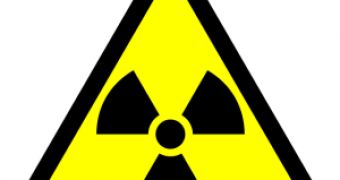Protons and neutrons are the basic constituents of the atomic nucleus. Understanding the interactions between the nucleons may provide some insight towards understanding the structure of the nucleus in light nuclei and neutron stars alike. An experiment carried out at the US Department of Energy's Thomas Jefferson National Accelerator Facility revealed that about 20 percent of the nucleons are bonded with another at any given time.
Additionally, protons are 18 times more likely to pair up with a neutron, rather than another proton. This pairing is called short-range correlation, and lasts for only a brief amount of time. Experiments were conducted on the carbon nucleus, by measuring the constituents of the short-range correlation between nucleons.
"These correlated nucleons have a high relative momentum. If you knock one out one way, the correlated nucleon will fly out in the opposite direction. We set up our detectors to take advantage of this", said Douglas Higinbotham, a Jefferson Lab Staff Scientist that led the investigations taking place in the Jefferson Lab's Experimental Hall A.
The results show that about 18 percent of all protons are short-range correlated with a neutron at any given time, while another 1 percent of protons paired with other protons and 1 percent of neutrons stuck to neutrons.
"I think it shows, for the first time in a very clear and unambiguous way, the fact that the large momentum nucleons in nuclei are coming in pairs. And they're coming mainly in proton/neutron pairs", said professor Eli Piasetzky from the Tel Aviv University, who detailed the results of the experiment.
"The result from this experiment is like finding that missing piece needed to finish a puzzle. This experiment, combined with others, gives us a very coherent picture of these short-range correlations in the nucleus", Higinbotham added.
Carbon-12 sheets measuring 0.25 millimeters in width were bombarded with an energetic electron beam that, when interacting with a paired up nucleon, causes the latter to fly out of the nucleus. The spectrometer and the neutron detector of the experiment revealed that when this happens, the nucleon bonded to the first by short-range correlation is ejected in the other direction.
The results reveal that proton/neutron correlations may have some effect on the nucleon distribution inside neutron stars, possibly affecting even their structure.

 14 DAY TRIAL //
14 DAY TRIAL //